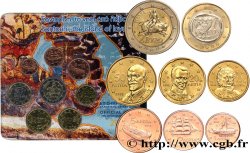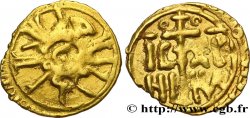Live auction - fme_993809 - TERZA REPUBBLICA FRANCESE Médaille, Hospices d’Angers
Devi Sign-in ed essere un offerente approvato fare un'offerta, Login per fare offerte. Conti sono soggetti ad approvazione e di approvazione sono raggiunti entro 48 ore. Non aspettare fino al giorno di una vendita si chiude per registrarti.Confermando la tua offerta su questo oggetto ti impegni ad un contratto legalmente vincolante per l'acquisto di questo prodotto e fare clic su «offerta» costituisce accettazione dei termini di utilizzo de live auctions cgb.fr.
Offerta deve essere collocato in euro gli importi interi vendita only.The si chiuderà al momento sulla descrizione dell'oggetto, eventuali offerte pervenute al sito dopo l'orario di chiusura non verranno eseguite. Volte transmition possono variare e le offerte potrebbero essere respinto se si attende per gli ultimi secondi. Per ulteriori informazioni ckeck le FAQ Live auction.
Le offerte vincenti saranno sottomesse ai 18% per spese di compartecipazione alla vendita.
Le offerte vincenti saranno sottomesse ai 18% per spese di compartecipazione alla vendita.
| Valutazione : | 100 € |
| Prezzo : | 54 € |
| Offerta maxima : | 100 € |
| Data di fine vendita : | 11 febbraio 2025 16:41:43 |
| partecipanti : | 2 partecipanti |
Tipo : Médaille, Hospices d’Angers
Data: (1919)
Metallo : argento
Diametro : 45 mm
Asse di coniazione : 12 h.
Incisore GREGOIRE René (1871-1945)
Peso : 35,9 g.
Orlo : lisse + ARGENT losange + tête de sanglier
Marchio : Losange ARGENT Tête de sanglier
Commenti sullo stato di conservazione:
Platine hétérogène avec des traces de manipulation. Quelques tâches d’oxydation
N° nelle opere di riferimento :
Diritto
Titolatura diritto : HENRI. II. PLANTAGENET BIENFAITEUR 1179.
Descrittivo diritto : Profil à gauche du buste d’Henri II Plantagenêt dans le cloître de l’hôpital Saint-Jean. Signé : GREGOIRE.
Rovescio
Titolatura rovescio : HOSPICES D’ANGERS // SENECHAL ETIENNE FONDATEUR 1174.
Descrittivo rovescio : Chapelle Sainte-Marie et cour d’honneur arborée au-dessus d’un cartouche vierge. Signature monogramme : RG.
Commento
La médaille des hospices d’Angers présente une interprétation historique correcte du rôle des « fondateurs officiels », Henri Plantagenet et Étienne de Marçay, non sans anachronisme dans la représentation. On la doit au Saumurois René Grégoire (1871-1945), prix de Rome de gravure de médaille en 1899.
Elle figure sur l’avers un profil qui serait celui du roi Henri II Plantagenêt d’après l’inscription gravée Pas mieux inspiré par le Plantagenêt que les artistes Lenepveu et Appert (supra, fig. 4 et 5), le graveur a simplement repris en changeant le côté du profil, le buste du roi Louis XII tel qu’il figurait dans la médaille de mariage avec Anne de Bretagne offerte à Lyon en 1500 n. s.73. Ce profil était bien connu parce qu’il a été repris par Armand Caqué en 1836 pour sa 57e médaille de la série « Galerie des rois de France ». En arrière-plan, le petit cloître de l’hôpital Saint-Jean correspond à la période d’Henri Plantagenêt mais la porte au fond est celle de l’entrée de la chapelle au début du xviiie siècle.
Au revers, René Grégoire n’a pas osé figurer le « sénéchal Etienne » et l’a remplacé par une vue de la cour d’honneur de l’hôpital du xixe siècle avec la chapelle et son dôme au centre. Henri II est qualifié de « bienfaiteur, 1179 » et Étienne de « fondateur, 1174 ». Les deux qualités sont justes mais les dates reflètent partiellement la recherche historique. 1174 correspond à ce qui était considéré comme l’entrée en fonction du sénéchal par la majorité des historiens du xixe siècle74. On savait pourtant qu’il était déjà en place en 1168. En revanche l’année 1179 est issue non pas d’anciennes études historiques mais de la fourchette haute des dates des dons d’Henri II publiés par Léopold Delisle75 dans son Recueil des actes d’Henri II et reprises par le chanoine Urseau en 192276.
On ne connait ni l’origine de cette commande ni l’auteur des inscriptions qu’a reproduit le graveur. Il est probable que le chanoine Charles Urseau qui venait d’être nommé, en 1917, conservateur du musée d’Antiquités Saint-Jean et donc tout proche de l’hôpital du xixe siècle, n’a pas manqué d’être sollicité..
The medal of the hospices of Angers presents a correct historical interpretation of the role of the \\\"official founders\\\", Henry Plantagenet and Stephen of Marçay, not without anachronism in the representation. We owe it to René Grégoire (1871-1945) from Saumur, winner of the Prix de Rome for medal engraving in 1899..
On the obverse, it features a profile which would be that of King Henry II Plantagenet according to the engraved inscription No better inspired by the Plantagenet than the artists Lenepveu and Appert (supra, fig. 4 and 5), the engraver simply took up, by changing the side of the profile, the bust of King Louis XII as it appeared in the marriage medal with Anne of Brittany offered in Lyon in 1500 n. s. 73. This profile was well known because it was taken up by Armand Caqué in 1836 for his 57th medal in the series “Gallery of the Kings of France”. In the background, the small cloister of the Saint-Jean hospital corresponds to the period of Henry Plantagenet but the door in the background is that of the entrance to the chapel at the beginning of the 18th century.
On the reverse, René Grégoire did not dare to include the \\\"seneschal Etienne\\\" and replaced it with a view of the main courtyard of the 19th century hospital with the chapel and its dome in the center.. Henry II is described as \\\"benefactor, 1179\\\" and Stephen as \\\"founder, 1174\\\". Both qualities are correct but the dates partially reflect historical research. 1174 corresponds to what was considered to be the entry into office of the seneschal by the majority of 19th century historians74. However, we knew that it was already in place in 1168.. On the other hand, the year 1179 comes not from old historical studies but from the upper range of dates of donations from Henri II published by Léopold Delisle75 in his Collection of Acts of Henri II and taken up by Canon Urseau in 192276.
We do not know the origin of this order nor the author of the inscriptions reproduced by the engraver.. It is likely that Canon Charles Urseau, who had just been appointed curator of the Saint-Jean Museum of Antiquities in 1917 and was therefore very close to the 19th century hospital, was not without being asked.
Elle figure sur l’avers un profil qui serait celui du roi Henri II Plantagenêt d’après l’inscription gravée Pas mieux inspiré par le Plantagenêt que les artistes Lenepveu et Appert (supra, fig. 4 et 5), le graveur a simplement repris en changeant le côté du profil, le buste du roi Louis XII tel qu’il figurait dans la médaille de mariage avec Anne de Bretagne offerte à Lyon en 1500 n. s.73. Ce profil était bien connu parce qu’il a été repris par Armand Caqué en 1836 pour sa 57e médaille de la série « Galerie des rois de France ». En arrière-plan, le petit cloître de l’hôpital Saint-Jean correspond à la période d’Henri Plantagenêt mais la porte au fond est celle de l’entrée de la chapelle au début du xviiie siècle.
Au revers, René Grégoire n’a pas osé figurer le « sénéchal Etienne » et l’a remplacé par une vue de la cour d’honneur de l’hôpital du xixe siècle avec la chapelle et son dôme au centre. Henri II est qualifié de « bienfaiteur, 1179 » et Étienne de « fondateur, 1174 ». Les deux qualités sont justes mais les dates reflètent partiellement la recherche historique. 1174 correspond à ce qui était considéré comme l’entrée en fonction du sénéchal par la majorité des historiens du xixe siècle74. On savait pourtant qu’il était déjà en place en 1168. En revanche l’année 1179 est issue non pas d’anciennes études historiques mais de la fourchette haute des dates des dons d’Henri II publiés par Léopold Delisle75 dans son Recueil des actes d’Henri II et reprises par le chanoine Urseau en 192276.
On ne connait ni l’origine de cette commande ni l’auteur des inscriptions qu’a reproduit le graveur. Il est probable que le chanoine Charles Urseau qui venait d’être nommé, en 1917, conservateur du musée d’Antiquités Saint-Jean et donc tout proche de l’hôpital du xixe siècle, n’a pas manqué d’être sollicité..
The medal of the hospices of Angers presents a correct historical interpretation of the role of the \\\"official founders\\\", Henry Plantagenet and Stephen of Marçay, not without anachronism in the representation. We owe it to René Grégoire (1871-1945) from Saumur, winner of the Prix de Rome for medal engraving in 1899..
On the obverse, it features a profile which would be that of King Henry II Plantagenet according to the engraved inscription No better inspired by the Plantagenet than the artists Lenepveu and Appert (supra, fig. 4 and 5), the engraver simply took up, by changing the side of the profile, the bust of King Louis XII as it appeared in the marriage medal with Anne of Brittany offered in Lyon in 1500 n. s. 73. This profile was well known because it was taken up by Armand Caqué in 1836 for his 57th medal in the series “Gallery of the Kings of France”. In the background, the small cloister of the Saint-Jean hospital corresponds to the period of Henry Plantagenet but the door in the background is that of the entrance to the chapel at the beginning of the 18th century.
On the reverse, René Grégoire did not dare to include the \\\"seneschal Etienne\\\" and replaced it with a view of the main courtyard of the 19th century hospital with the chapel and its dome in the center.. Henry II is described as \\\"benefactor, 1179\\\" and Stephen as \\\"founder, 1174\\\". Both qualities are correct but the dates partially reflect historical research. 1174 corresponds to what was considered to be the entry into office of the seneschal by the majority of 19th century historians74. However, we knew that it was already in place in 1168.. On the other hand, the year 1179 comes not from old historical studies but from the upper range of dates of donations from Henri II published by Léopold Delisle75 in his Collection of Acts of Henri II and taken up by Canon Urseau in 192276.
We do not know the origin of this order nor the author of the inscriptions reproduced by the engraver.. It is likely that Canon Charles Urseau, who had just been appointed curator of the Saint-Jean Museum of Antiquities in 1917 and was therefore very close to the 19th century hospital, was not without being asked.








 Segnalare un errore
Segnalare un errore Stampate la pagina
Stampate la pagina Condividi mia selezione
Condividi mia selezione Fai una domanda
Fai una domanda Consegnare / vendere
Consegnare / vendere
 Descrittivo
Descrittivo















